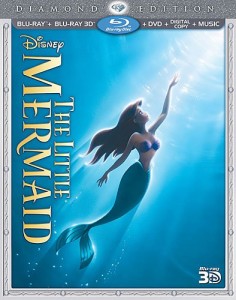Spider-Man
Posted on December 13, 2002 at 5:17 am
 Remember when “Superman” was released with the tagline, “You will believe a man can fly?” Well, “Spider-Man” will not only make you believe that a teenager can swing from the skyscrapers; it will almost make you believe that you are up there swinging with him.
Remember when “Superman” was released with the tagline, “You will believe a man can fly?” Well, “Spider-Man” will not only make you believe that a teenager can swing from the skyscrapers; it will almost make you believe that you are up there swinging with him.
Comics were hugely popular back in the days when they could show us stories that no one else could. But now, movies can show us anything that can be imagined, and a movie like this does it so well it makes you think that this is what imagination is for.
Toby Maguire plays Peter Parker, a brilliant and sensitive high school senior, so deeply in love with his red-headed next door neighbor Mary Jane (Kirsten Dunst) that he can barely bring himself to say hello to her. On a school field trip, he is bitten by a genetically engineered spider and the next morning he wakes up with some distinctly arachnid-like qualities. He can see without his glasses and he has become muscular. He can climb walls, eject webbing with the swinging power of rope and the strength of steel, and anticipate danger.
So, like any teenager, the first thing he does is impress a girl and humiliate a bully. He enters a wrestling match to get money so he can buy a car to impress the girl even more. His decision not to interfere with an armed robber has tragic consequences, and so he learns that his uncle was right in telling him that with great power comes great responsibility. Great risk comes as well — everyone he cares about is put at risk because of who he is.
Meanwhile, Peter’s best friend’s father, industrialist Norman Osborn (Willem Dafoe) has decided to try out his company’s new product on himself. He, too, develops extraordinary power and a mad fury. He is dubbed the Green Goblin for his bizarre armor-like covering.
Maguire is just right as Peter, thoughtful, sensitive, thrilled with his new powers. You can believe that he is the kind of kid who would spend his time a little bit apart from the others, taking photographs that are clear and perceptive. The supporting cast is great, especially stage star Rosemary Harris as Aunt May and J.K. Simmons as Peter’s bombastic editor. The script is excellent, and strikes just the right note of respect and affection for the source material. It has a contemporary feel without being showily post-modern or ironic.
The special effects are thrilling. New York City is brilliantly stylized. Peter’s relationship with MJ is sweetly romantic. And when a bunch of New Yorkers throw things at the Green Goblin, yelling, “This is New York and we fight back!” it is genuinely touching.
The movie’s weakest point is that it fails in the single most important requirement for a comic book-based movie — the villain is not unforgettably crazy or evil or larger-than-life. The best Batman movies featured Jack Nicholson as The Joker and Jim Carrey as The Riddler. Willem Dafoe is a brilliant actor (just take a look at his Oscar-nominated performance in “Shadow of the Vampire”), but the part of Osborn/Green Goblin is just not interesting enough to be truly scary. The flying surfboard he rides around on is very cool, but his exoskeleton costume and mask are just dumb-looking.
Parents should know that the PG-13 rating comes from a couple of mild words, a clingy wet t-shirt, and a great deal of violence. The violence gets very intense, and includes not just fires and explosions but people getting vaporized, shot (off-camera), and impaled. Characters lose people close to them to violent deaths. A group of schoolchildren are in peril. Parents emotionally abuse their children.
For parents who are struggling with whether this movie is appropriate for kids under 13, the best guide I can provide is to say that it is about at the level of X-Men. I recommend caution, especially for children under 10. Keep in mind that just because a child can repeat after you “it’s only pretend” does not mean that he fully understands what that means until he is 10 or even older, and that the terrorist attacks may make some of the material scarier than it would have been before (scenes featuring the World Trade Center have been removed from the movie). Some kids may see the movie and appear to have no problems with it, but may act out in other ways. Be watchful for kids who respond by desensitizing themselves to violence or re-enacting it. And if you are going to let childrn see the movie, make sure that they know that this is an exception and that you will not be permitting them to see any PG-13 just because you allowed this one.
Families who see this movie should talk about the idea that the people we love make us feel good about who we are at the same time they make us see a way to be better. Do you agree that “people love to see a hero fail?” Characters in the movie keep a lot of secrets. What makes them decide not to tell, and who is and is not right in making that choice?
Families who enjoy this movie will also enjoy Superman and Batman. Mature audiences will enjoy Toby Maguire’s outstanding performances in “Wonder Boys,” “The Cider House Rules,” and “The Ice Storm.”

